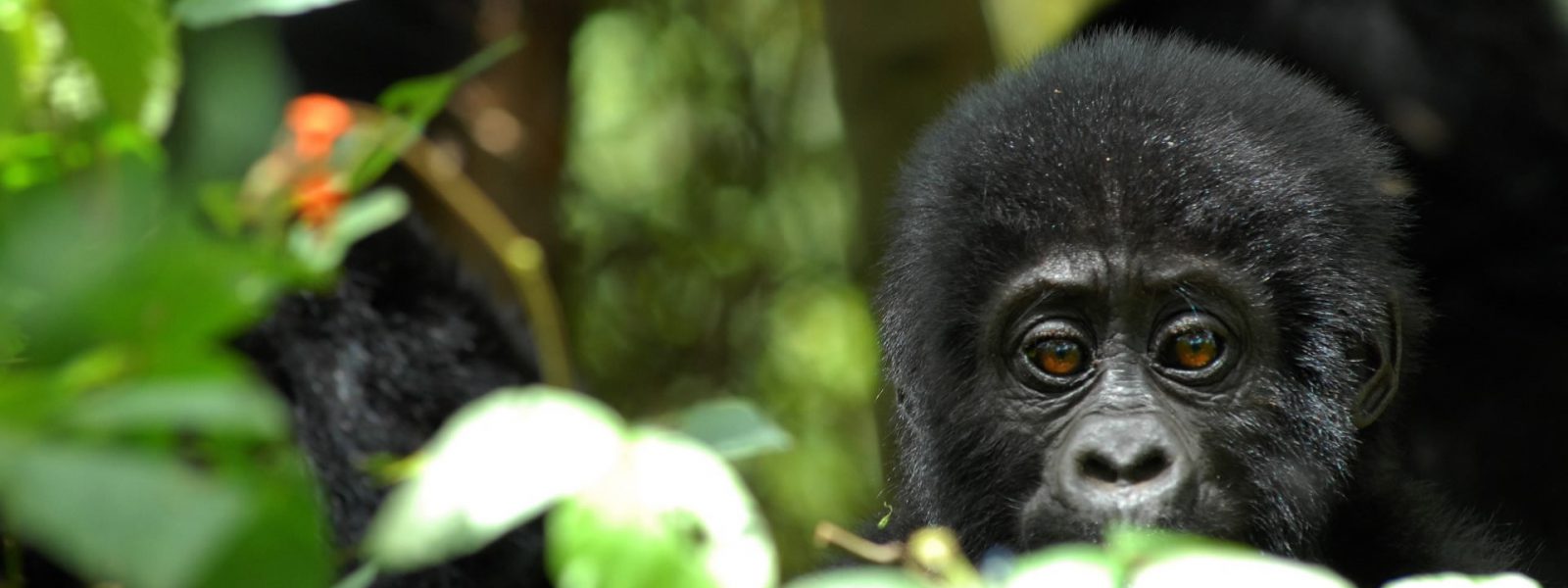The park is located in the south western Uganda on borderline with Rwanda and D.R. Congo. It covers an area of 33.7km2, making it the smallest National Park in Uganda. The park can be accessed by road and from Kampala city, it is 510km which takes about 9-10 hours’ drive.
The name of the park comes from “Gahinga” the local word for the piles of volcanic stones cleared from farmland at the foot of the volcanoes. And therefore, part of it is located in Virunga conservation region. The park is famous because is a home of the remaining rare mountain gorillas which roam about the whole forest in search for food and therefore, it offers a chance for gorilla trekking.
The diverse habitats are the reason for the variety of wildlife found in this small park. 68 mammals and over 350 species of birds have been recorded here. There is no doubt that Mgahinga Gorilla national park is one of the leading tourism sites in Uganda since it harbours these rare primates.
Not only being dominant for wildlife, the park also has enormous cultural significance in particular for the indigenous Batwa pygmies. The Batwa was the first people to live in the forest and their ancient knowledge of its secrets remains unrivalled.
The park was stablished to protect the rare mountain gorillas that roam freely within the Virunga area. The park is bordered by the Volcanoes National Park of Rwanda and the Virunga National Park of the Democratic Republic of Congo. In 1930, it was announced a game sanctuary by the British administration and was gazetted as a national park in 1991. The park has only got one habituated trans- boundary gorilla group. The visitors can also enjoy the Batwa visit which is a much far fascinating tour with the Batwa guide to learn the secrets of the forest.
In 1991, the park was established in an area that used to be a game reserve between the 1930s and 1950, but was partly converted to crop fields in lower altitudes. In 1989, rangers trained, trees planted, biological surveys were initiated and wire traps destroyed. Settlers were relocated to areas outside the national park’s borders in the early 1990s
In 1930 the British administration proclaimed the area a game sanctuary and in 1991, it was gazetted as a National Park.
What to do in Mgahinga national park
Gorilla trekking. This can take 2-6 hours depending on where and the gorilla family you have trekked. This is the one of the great experience you need not to miss while on your safari to Africa.
Golden monkey trekking. Here trekkers are given a chance to trek the beautiful primates in their natural environment. You will spot a number of primates such as Ruwenzori monkeys, blue monkeys, colobus monkey among others. Remember golden monkeys can be only found in Mgahinga in the whole country.
Cultural Encounters. For many years, Mgahinga forests were home to the indigenous Batwa – hunter-gatherers and fierce warriors who depended on the forest for shelter, food and medicine. Now they lead tourists through the forests and introduce them to their old home and the techniques they used to survive in it.
Birding in Mgahinga forest is another exciting activity which takes place in some of its most beautiful scenery, in the gorge between Mt. Sabinyo and Mt Gahinga, through the montane forest and in bamboo forest, where White-necked raven, Black kite, Pin-tailed whydah, Double-collared sunbird, Ruwenzori Turaco may be observed.
Hiking/nature walks around the edge of Virunga Volcanoes gives you a chance to spot bamboo forests, wild vegetation, forest birds, the Rugezi Swamp, and glorious views of the surrounding lakes and agricultural villages.
When to visit the park
Visiting Mgahinga national park is an all year adventure hence you can visit at any time you like. However, the maximum satisfaction is achieved if the activity is conducted during the 2 dry seasons from December to February and June to September because this is when the hiking trails are not slippery and muddy.
Getting to Mgahinga national park
The Park is 510km from Kampala the most commonly used route passes through Mbarara, Kabale and Kisoro. The journey from Kampala to Mgahinga forest national park can take 9-10 hours on a good tarmac road.
An attractive, alternative route leaves the main road at Kabale and follows the shoreline of the superbly scenic Lake Bunyonyi to re-join the Kabale-Kisoro main road at its halfway point at Muko. The main entrance to the Park is 14km from Kisoro town at the end of a dirt road with some steep and rocky sections.
Alternatively, Mgahinga forest national park can also be reached by air using the daily flights from Entebbe/Kajjansi airfield to Kisoro airfield.








